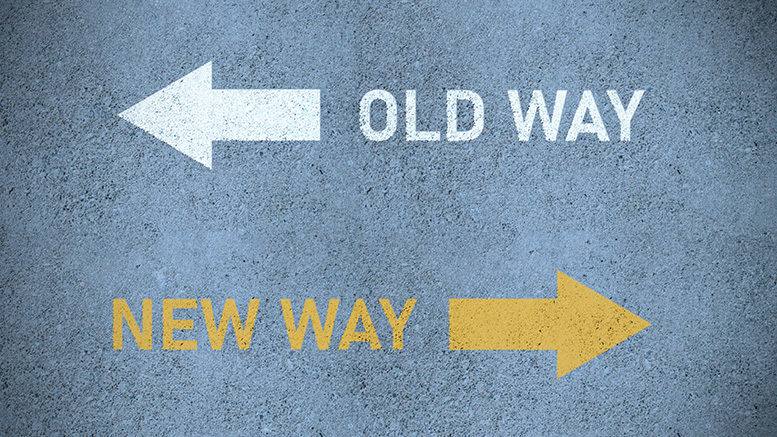The current crisis has created an opportunity to reassess and reset workforce development programs at community colleges – and it’s an opportunity that can’t be wasted, according to panelists at a Thursday plenary session during the American Association of Community Colleges’ virtual Workforce Development Institute.
Those hit hardest by the pandemic are younger adults working in low-wage service jobs, and most of them are people of color. With thousands of businesses permanently shuttered, “many won’t go back to the same jobs they were laid off from,” said Jan Yoshiwara, executive director of the Washington State Board for Community and Technical Colleges. “The labor needs post-Covid won’t be the same as pre-Covid.”
She added, “It is incumbent upon us to figure out how to best serve these people.”
Resetting relationships
A reset will require looking ahead and developing programs that reflect where the economy is going, according to Chauncy Lennon, vice president for work and learning at Lumina Foundation. But that’s a challenge because of a lack of data, particularly on credentials and certificates.
“We’re all in the dark,” Lennon said. That limits how community colleges can engage with employers and decide what programs to cut and what programs to create, and how to ensure those programs connect to industry.
Despite that, “community colleges have to be the chief economic development actor in your community,” Lennon told the attendees of the virtual conference. “You have to be the driver. You can’t assume employers have all the information.” Part of that includes translating credentials for employers.
Colleges need to work more closely with workforce boards, as well, and not be afraid to “nudge and lean on” the boards for critical labor market information, said Ron Painter, president and CEO of the National Association of Workforce Boards. He added: “We need to champion each other” and have honest conversations about what they need from each other.
Resetting customer service
Another important way to reset is by rethinking the student experience.
“We’re going to have to meet them where they are,” Painter said. He likened colleges to the shopping experience: “Do we have merchandise or programming we’re going to have to mark down because no one is buying it?”
Changing the student experience has required more internal and external communication at Missouri’s Metropolitan Community College (MCC).
“We really had to go out and listen and be intentional about it,” said MCC Chancellor Kimberly Beatty.
Communicating about financial aid is crucial with external communications. People who would qualify for it aren’t accessing it, Beatty said.
There also is a need to ask, “What’s the value proposition?” according to Monty Sullivan, president of the Louisiana Community and Technical College System. “What value does your institution bring to the student? Is there a real financial impact to get the student from where they are to where they need to be?”
Resetting policies and practices
Training people – especially essential workers – during the pandemic, when safety is paramount, has caused colleges to question policies and practices, such as testing, 16-week semesters and faculty course load.
“We have the opportunity to rewrite those policies,” Sullivan said, and “flip the script.”
Community colleges were built “in the image of universities, but we have very different missions,” he said. Instead, the focus should be on building institutions that work for adults.
“This is our time, but it will require a fundamental change in our institutions and a fundamental change in our relationships with workforce boards,” Sullivan said.
The same thinking has happened at MCC. Beatty said the college is using this time as an opportunity to redesign curricula and look at how and when courses are offered. More weekend and evening classes, or even early morning classes, appeal to working students.
“We are uniquely positioned to continue to grow programs, understand the impacts of Covid in our communities and come up with solutions to meet the needs of our communities and industry partners,” Beatty said.
In Washington state, there’s a focus on equitable access.
“Part of the conditions we’re in now, inequities are more visible than they have been ever before,” Yoshiwara said. “There’s an opportunity to think about our role in creating a more equitable and just society. We are the sector of higher ed that has the greatest ability to do that.”
Right now, community and technical colleges are reaching out to the “people who need us the most and can benefit from us the most,” Yoshiwara said. Getting to those people requires changing policies and practices that are barriers to access. As with MCC, outreach also includes educating people about financial aid.
“We’re using that as a conversation starter for people who have lost a job or work in low-wage occupations,” Yoshiwara said.
Though community college enrollment is down nationwide, Washington’s community and technical colleges are preparing for unemployed people to soon come through their doors.
“We need to build our capacity in high-demand programs to serve them,” Yoshiwara said, and ensure that wrap-around services are available.
Looking ahead
Panelists also discussed their hopes for the future and for the new Biden administration.
Sullivan would like to see more funds for adult learner programs. Though Pell grants and Workforce Innovation and Opportunity Act (WIOA) funding are largely responsible for talent development, “how is it that today we sit with 64 million working-age adults with a high school diploma or less?” he asked.
“We need to spend dollars based on how adults need to be educated and skilled,” Sullivan said.
Lennon said that when it comes to the Biden administration’s priorities – which include ending the pandemic, economic recovery, racial justice, infrastructure and climate change – the solution to all those things runs through community colleges and workforce development. Progress, however, relies on ensuring those two systems “are positioned to provide more training and more training to adults,” Lennon said.
In a final thought, Lennon said that, in this time of “tremendous strain,” there’s an opportunity to build the system that’s needed. “Seize that moment,” he said.


